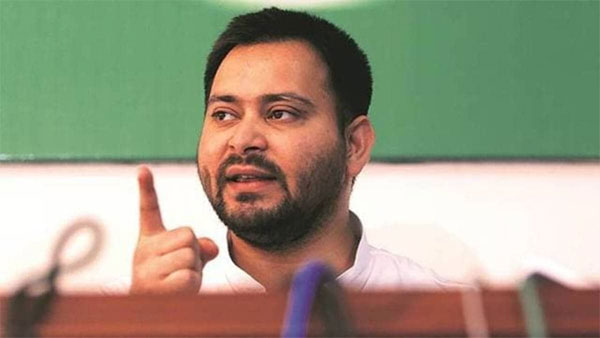Daijiworld Media Network - Patna
Patna, Oct 23: As Bihar heads toward Assembly elections, the Mahagathbandhan (Grand Alliance) appears both united in purpose and divided in detail. The bloc’s formal declaration of Tejashwi Yadav as its chief ministerial candidate, announced by Congress emissary Ashok Gehlot two months after Tejashwi’s own self-nomination, has come amid seat-sharing tensions and internal rivalries.
When Tejashwi, the Rashtriya Janata Dal (RJD)’s de facto chief, had first announced his CM ambitions in August, Rahul Gandhi, present at the event, had stayed notably silent. The eventual endorsement of Tejashwi by Gehlot followed days of negotiation with alliance partners, including Lalu Prasad Yadav and leaders from the Congress, Vikassheel Insaan Party (VIP), and Left parties.

Seat-Sharing Turbulence and VIP’s Unease
Within the alliance, VIP leader Mukesh Sahani has emerged as a key — and restless — figure. Granted only a quarter of the seats his party sought, Sahani was reportedly placated with assurances of the Deputy Chief Minister’s post and a future Rajya Sabha berth.
Congress’s Ashok Gehlot and CPI(ML) Liberation leader Dipankar Bhattacharya are said to have played a role in defusing tensions with Sahani. However, seat overlaps in nearly 10 constituencies have led to Mahagathbandhan candidates facing off against each other, which leaders are publicly dismissing as “a friendly fight in five or ten seats” — insignificant, they say, among Bihar’s 243 constituencies.
RJD’s Position and the Road Ahead
In the 2020 Assembly polls, the RJD emerged as the single-largest party with 75 seats, narrowly ahead of the BJP, which now shares power in the ruling NDA government under Chief Minister Nitish Kumar of the Janata Dal (United).
For Tejashwi, winning this time means navigating alliance friction while retaining RJD’s core Muslim-Yadav base. The VIP’s Nishad and Mallah support base, the Left’s reach among poorer and backward-class voters, and the Congress’s multi-community appeal could together help the alliance consolidate Muslim, Yadav, and OBC votes — if internal rivalries don’t fracture the coalition.
Challenges and the NDA’s Counter
The alliance’s task has been complicated by the resignation of 50 RJD leaders from the Extremely Backward Cell in Darbhanga, signaling potential cracks in its outreach to EBC voters. Meanwhile, the BJP has launched an aggressive campaign featuring Amit Shah and J.P. Nadda, targeting Tejashwi over his family’s alleged “jungle raj” legacy.
Shifting Political Equations
Ironically, the Mahagathbandhan unites parties once ideological adversaries. Lalu Yadav’s own rise in the 1990s came through anti-Congress movements and Mandal-era social justice politics, which sidelined the Left’s “class struggle” narrative. But a generation later, electoral pragmatism seems to have overtaken ideological divides.
The Stakes for Tejashwi
If Tejashwi Yadav manages to overcome intra-alliance frictions and NDA’s campaign blitz, he could become the third Chief Minister from his family, after Lalu Prasad Yadav and Rabri Devi.
Despite acknowledging that his political journey is rooted in his family legacy, Tejashwi has sought to position himself as a leader of a new Bihar, focused on employment and governance rather than dynasty and nostalgia.
Whether he can balance coalition management, legacy baggage, and voter expectations may determine if the Mahagathbandhan can translate its promise of unity into electoral success.